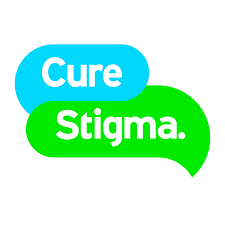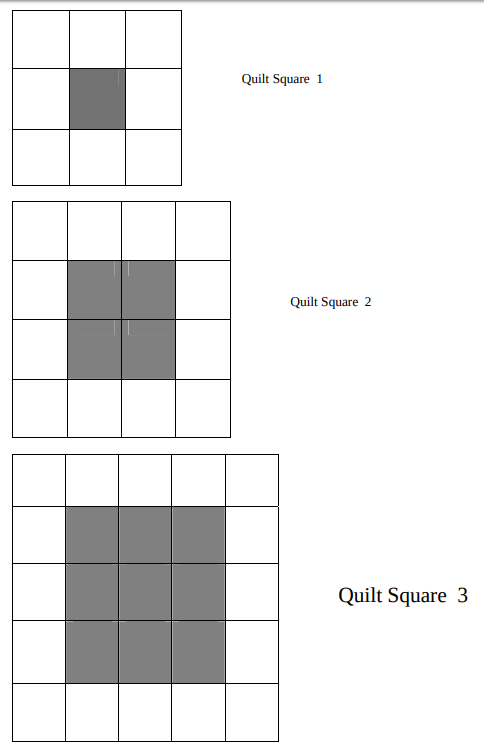- Require complex and non-algorithmic thinking.
- Require students to explore and understand the nature of mathematical concepts, processes or relationships.
- Demand self-monitoring or self-regulation of one’s own cognitive processes.
- Require students to access relevant knowledge and experiences and make appropriate use of them in working through the task.
- Require students to analyze the task and actively examine task constraints that may limit possible solution strategies and solutions.
- Require considerable cognitive effort and may involve some level of anxiety for the student due to the unpredictable nature of the solution process required.
Category: Conversations (Page 1 of 3)

Our amazing guidance department has combined together to put on events for Mental Health month throughout May. There have been lots of events each day during lunch, and experts brought in to talk to the staff and answer questions. While all of the events are valuable, I think the most memorable event was the student health panel during our two town halls. There’s still programming left for next week, so maybe more good things were in store, but this panel looks to be the most memorable for a number of reasons.
First off the student health panel was great for the 9 students who were brave enough to sit on the stage and open up to the school. Some kids were shaking as the panels started, while others were bubbling with nervous laughter. Everyone was ready to do this, but ‘this’ was certainly not a normal event. Between these students there were some 20+ different diagnoses, including Obsessive Compulsive Personality Disorder to Bulemia to Depression, with many people having one kid. A counselor served as moderator and asked three questions:
- Introduce yourself, and as much about your condition(s) that you want to share.
- Describe your mental illness. How does it affect you, what do you do to cope?
- What are things at the school that help you?
Once the questions were asked, panel members took all the time they needed to explain their situation.
It was amazing to see these kids up there detailing their struggles, and their traumas, and their approach to handling it, in front of a huge group of kids. Each time a student responded to a question they were met with rounds of applause, and occasional cheering. The effect of the audience’s outpouring was visible as members of the panel relaxed and started to let their guards down. The audience also became more interested and more engaged as each person spoke, and cheered more when they finished. It was a great display of empathy on the part of the audience. The weeks of activities leading up to this, as well as the on going work of our guidance department, really helped to create this culture. Deep down, most kids have the capacity for empathy, even though they don’t show it. This event gave everyone a chance to put theirs to use.
At the same time, I’m aware that not every kid thinks kindly about people with mental illness. Stigma against mental illness pervades our society, so I’m sure it was operating in that auditorium perhaps among some of the quiet kids sprinkled through the auditorium. It’s not their fault. The idea of writing off or being hostile towards mental illness has a long history, and comes from a lot of different places. That doesn’t mean it makes sense. Especially now that we have the plethora of ways to treat mental illness. Some people, who could benefit from treatment, avoid it and live a much more difficult life without it, all just to avoid the label “Mentally Ill”. This kind of stuff is deep and hard to mandate that people change. Through the school’s work in creating this culture, hopefully there is an environment that will force people to question stigma and the ideas that come from it. In the auditorium this week, it was clear that the stigma was not in the majority and hopefully it will spark a change in the minds of the quiet kids sprinkled through the auditorium.
The kids requested a staff member be on stage, and I jumped at the opportunity. It’s a habit I’ve held since March of 2003 when I just left the hospital after a week’s stay following a manic episode. When someone asked me, “where were you?” I wouldn’t make up a story or change the subject. I’d say, “I was in the mental hospital because I have manic depression.” At the time it was practical. Life was hard enough trying to catch up with classes, I didn’t to create some elaborate story of my whereabouts that week. So I told people straight whenever it came up, and I continued to do so until I started working. Lots of fears kept me from revealing my illness to coworkers and all but a handful of students, at least until the town hall committee started looking for volunteers.
If you’re a teacher and you have a mental illness, let me say why it might be useful for you to share it with your school as well. When kids come back from a mental hospital, or share that they are going to therapy or trying out new medication, it is always helpful for them to know that an adult has gone through similar stuff, and was able to finish college and get a job, etc. It’s also valuable for you. Society forces us to hold so much in about our conditions, it’s rare when you get a chance to use your condition as a way to help someone. It’s personally uplifting when I get a chance to talk through the side effects of whatever a kid is taking, or get to point them to resources that can help them. My school is really supportive, so I may have a different view of things than most. In some schools stigma is the dominant voice around mental illness issues. This may be coming from the captain of the football team, and it could also come from some of the adults. It may not feel safe to be totally open around all the people of the school. Definitely pick your spots. But for one or two students it could be super valuable.
To close it out, here’s an email that I got from a student who sent this as I was writing this that speaks to how valuable opening up can be:
Hi, I really want to say thank you for being able to participate in the town hall yesterday. I really don’t really enjoy them, but yesterday it really had me appreciate it because normally I would expected that the student would be talking about mental illness. I never would of expected you to get up there and speck about your illness. I too deal with depression and anxiety disorder and I am on medication too. It had me appreciate that every one of us have own stories. I thank you again for being so bold and so courageous…
Rochelle Gutierrez is one of my personal academic rock stars. Since I saw her close out Shadowcon16 I’ve held her work up as what I needed to learn more about, and what I was so glad that people were doing. While I haven’t had time to read as much as I’d like, listening to that talk, and her Global Math talk was very powerful. Both challenged me to do more for the student populations that I serve, and comforted by the fact that researchers in the field are out doing work to challenge people like me.
Not everyone appreciates challenges, however. In a recent work, Gutierrez drew a number of connections between math and whiteness, which sparked the ire of a number of people. In response, critics led a tiki-torch parade across all media platforms with Fox News itself sparking the rally. Their main argument, it seems, is that whiteness should not be challenged.
While I don’t know the full detail of the argument, I want to make it clear that whatever side Rochelle Gutierrez is on, will be the side I am on. The idea that someone can pick apart a scholars work because it doesn’t match with your beliefs is an assault on all scientific disciplines. Without science, we as a people lack a firm way to connect the problems that plague us to solutions we would need to create. The clearest example I can think of, was the achievement gap, which has been the goal of our country since the at least the 90s. It has made less and less sense to me since the phrase became popular, but when I began reading the articles around this controversy, I made the connection between the gap, and this mathematical trend towards whiteness pretty early. “Why should the non-white people’s goal be do what the white people are doing? What if they should do something else?” But I thought my ideas were on the fringe. Listening to Rochelle’s work made clear that there was a connection, and there was a way to utilize the truth in that connection between Whiteness and Math to improve outcomes for students. Making these kinds of connections are important to making progress with math, or with science, or to make a more perfect union. The right for people to make connections, create knowledge, and push their field further is something that shouldn’t be threatened.
——-
So I originally sat down to write a post about this last week. The draft was about as long as this, actually. But it sat in my drafts folder next to posts about Charlottesville, Betsy Devos, and other things that haven’t gotten posted. When I come around to edit these kinds of posts at some point I let life’s business and distractions get in the way from my pushing the send button until it never gets pushed at all. It happened so often that I decided to give a talk about it at TMC, not as an expert, but as someone trying to figure out the answer. In this case, I am hitting send. In part because I have time, and because of this poem, and the fear that things like open expression, and anyone pushing the send button, is at stake if this kind of intimidation is allowed to go unchecked.
Thursday was Brooklyn-Queens day, the NYC-specific holiday that excuses students from school, and gives the teachers a professional development day. Our school was attended the 7th annual Transfer School Conference along a thousand or so other transfer school educators. These are high schools that serve kids who needed to transfer from their original high school for many dozen reasons. Our schools are spread out all around the city, so there was lots of warm greetings among distant friends as we filed into the auditorium of Brandeis High School for the keynote.
My colleague and I were talking about the conference when I saw that the opening keynote would be delivered by Chris Emdin. Chris Emdin is a rising figure in education who recently secured a position at Columbia, speaking gigs at TED, SXSW Ed and every in between, and a New York Times best seller. When I saw his face looking out at me from the program, I immediately rolled my eyes. His research is great, and his #HipHopEd message is important, and I heard he was a dynamic speaker, but I was skeptical. On that morning, I figured he would be talking at an elementary level, giving the stock overview of his recent book. I had just left a session about technology that I already knew about, so internally I wasn’t very excited. However, I was probably as excited as most teachers are at a school PD. Whatever discernable excitement seemed to leave the room once the organziers called for people to stop their side conversations and find a seat.
Emdin stepped up to the podium, checked the sound and began to talk about the importance of the work of transfer schools, but also the need for us to really think about the work we do. He quickly won me over with his opening statement about the meaning of the word “Transfer”. As educators we need need to be constantly changing, or “tranferring” ourselves as we face new students, new challenges, and new opportunities. This process should specifically broaden our ability to allow students to bring their culture into the classroom and the school and see their culture validated and connected to learning. This all resonated with our school’s vision, and my colleague next to me was on board as well. It wasn’t clear if the rest of the crowd had gotten interested.
Emdin left the podium and began walking across the stage seeking to engage more listeners. He defined what he calls #HipHopEd. No, it didn’t involve having kids write lyrics about quadratics, or synthetic division, but more about teachers actively seeking to understand and embrace their student’s culture. He doesn’t profess to actually liking all of the music the kids listen to these days (he’s more into Biggie than Kodak Black), but he is aware of it. Educators should study the culture of their students and recognize when you’re operating from a “perch of superiority.” I took away that teachers quest for respectability in the classroom can quickly turn into a culture battle, when just as quickly it could turn into a chance to understand the cultural gap and seek to bridge it by bringing the student’s culture into the classroom As educators begin Emdin’s “Transfer” work, it sounds like the first place to start is with yourself, and with your relationship to the culture of the student’s you serve. He was very passionate at this point, but I took my eyes away to write the following in my Evernote: “HipHop Ed is about changing yourself to meet the needs of the community you serve.”
Emdin distilled his message with clearer and starker language as the talk went on. Like explaining something to a kid who keeps getting the wrong answers, no matter how many examples you create. Maybe we weren’t a good crowd. It seemed like no one disagreed with him, but we weren’t jumping on our feet either (at least not yet). It was probably that Emdin was really, genuinely worried that we wouldn’t leave there inspired. Deep down he knows the important work we do, and he was going to keep pumping us with energy until he was sure that we knew it too. This conference was not his only possible speaking gig for this PD day, and it certainly wasn’t the most lucrative. He jumped on this conference because he’d rather be with people doing this kind of work. His passion showed as he veered pretty far off script. We only went through 3 of his prepared slides! Instead he crafted new ways to describe the urgency of the problems we face and the solutions that are within our grasp. Stories, analogies, and metaphors kept coming rapid fire, followed by incrementally increasing applause.
Emdin then stepped down from the stage. At this point he was striding back and forth in front of the orchestra pit, pausing to emphasize key points. One point was about acts of violence done to students by our education system. The acts of violence that happen to students who leave the school system thinking there are limits on what they can become, that their community is garbage, and only some far away privileged group can pursue their dreams. This is not physical or verbal violence, but perhaps more damaging. These kind of messages can be heaped upon kids by some bad teachers, but also by unwitting good teachers. If you’re a good person, working for a bad system, and can’t direct students away from that systemic harm, then you’re condoning the ‘violence’ being done to these students. Good people can unwittingly do bad things, or lead to bad results. It’s a tough message to hear, but opens up a useful line of thinking. What kinds of things can I do as a teacher to disrupt the systems that hurt our students?
Emdin began walking further and further along the front of the stage and eventually up into the crowd. More and more of the crowd nodding along, more and more fits of applause. Someone even stood up and screamed!
By the time his talk came to a close, Emdin had the crowd’s support regardless of what people heard. This was very real because the last 5 minutes of his talked was peppered with interruptions that knocked out his audio for 10-15 seconds while someone tested the building’s PA system. He would be part way through delivering his final words when “BEEEEP….*click* ‘Test… Test… ‘ *click*.” Whoever was doing it did not know that it was during the keynote. Emding would have start back up again, summarizing everything he talked about, but before he could finish another interruption would stop his audio. We went through at least four of these interruptions, and each one was more visibly defeating. He got back on the stage, back behind the podium, and evem took off his microphone altogether. Then he said his final words and looked at the crowd, exhausted. He was then met with the longest standing ovation that I’ve ever seen at a PD.
Emdin didn’t sell any books after his session. If he had an organized book signing at a table nearby he would have sold dozens, but he wasn’t there for that. Instead he came from behind the stage and chatted it up with anybody who could talk to him until his ride came. The talk made me want to read Emdin’s new book after I finish all this other reading I have to do. That means he definitely won at least one educator over, because before today, I was not interested. After talking to teachers at my school the next day, I’m pretty sure he won over a hefty portion of the audience as well. Pretty cool PD.



